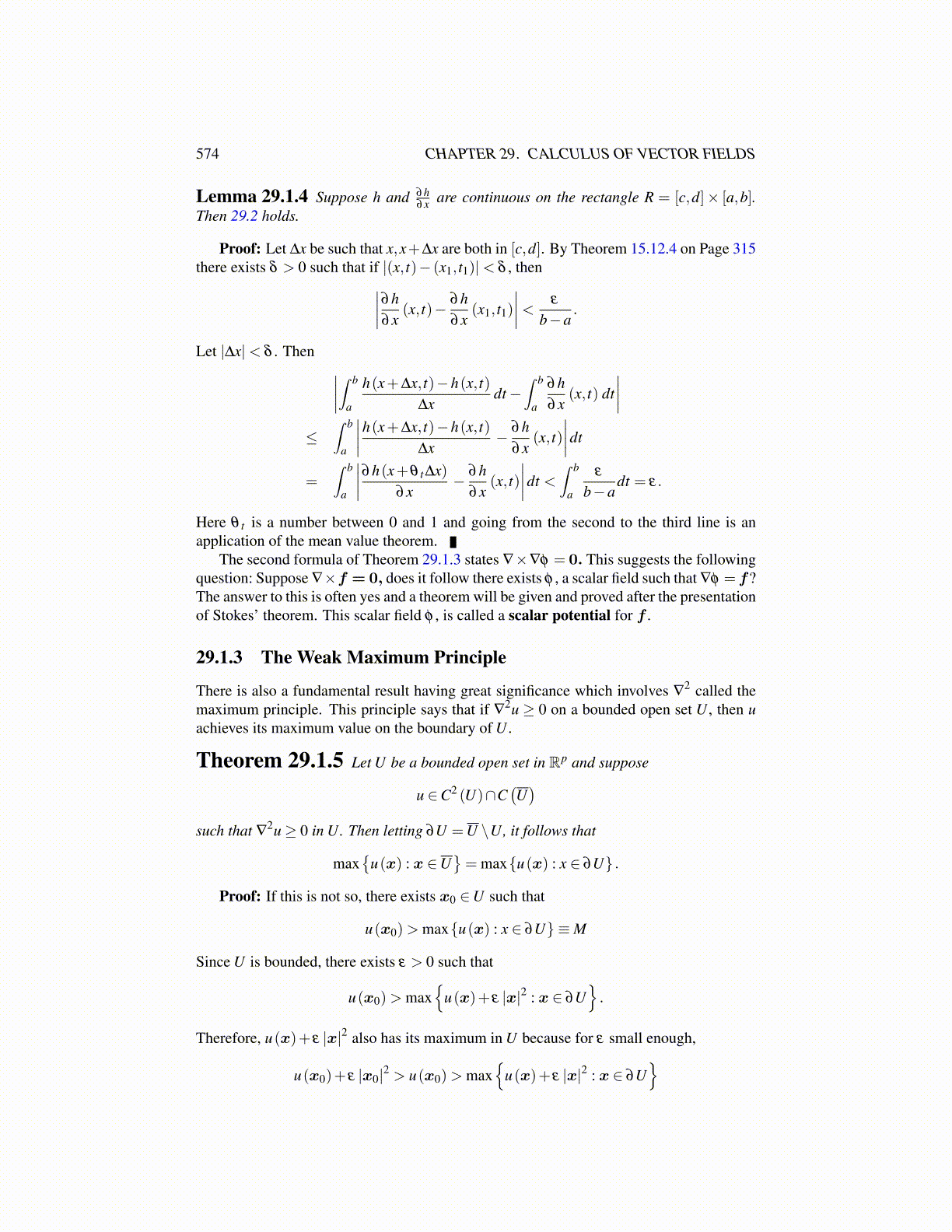
574 CHAPTER 29. CALCULUS OF VECTOR FIELDS
and so on the bottom surface,
nz =−1√
φ2x +φ
2y +1
Note that here the z component is negative because since it is the outer normal it must pointdown. On the lateral surface, the one where (x,y) ∈ ∂D and z ∈ [φ (x,y) ,ψ (x,y)], nz = 0.
The area element on the top surface is dA=√
ψ2x +ψ2
y +1dxdy while the area element
on the bottom surface is√
φ2x +φ
2y +1dxdy. Therefore, the last expression in (29.3) is of
the form,
∫D
F (x,y,ψ (x,y))
nz︷ ︸︸ ︷1√
ψ2x +ψ2
y +1
dA︷ ︸︸ ︷√ψ2
x +ψ2y +1dxdy+
∫D
F (x,y,φ (x,y))
nz︷ ︸︸ ︷ −1√φ
2x +φ
2y +1
dA︷ ︸︸ ︷√
φ2x +φ
2y +1dxdy
+∫
Lateral surfaceFnz dA,
the last term equaling zero because on the lateral surface, nz = 0. Therefore, this reducesto∫
∂V Fnz dA as claimed.The following corollary is entirely similar to the above.
Corollary 29.3.3 If V is cylindrical in the y direction, then∫V
∂F∂y
dV =∫
∂VFny dA
and if V is cylindrical in the x direction, then∫V
∂F∂x
dV =∫
∂VFnx dA
With this corollary, here is a proof of the divergence theorem.
Theorem 29.3.4 Let V be cylindrical in each of the coordinate directions and letF be a C1 vector field defined on V . Then∫
V∇ ·F dV =
∫∂V
F ·ndA.
Proof: From the above lemma and corollary,∫V
∇ ·F dV =∫
V
∂F1
∂x+
∂F2
∂y+
∂F3
∂ydV
=∫
∂V(F1nx +F2ny +F3nz) dA
=∫
∂VF ·ndA.